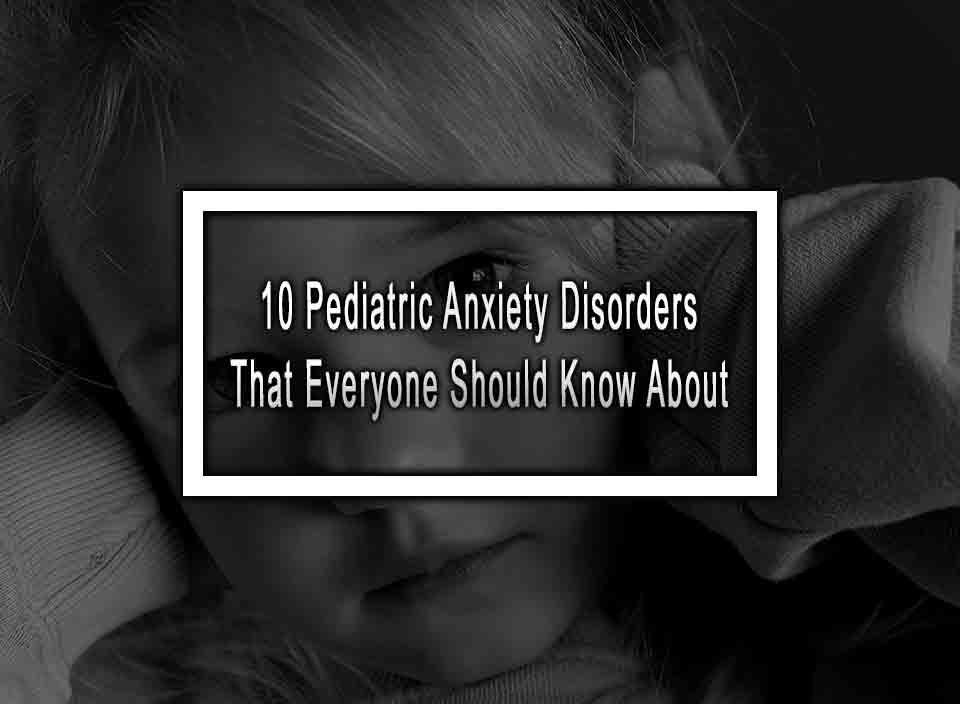Table of Contents
TogglePediatric Anxiety Disorders: Shedding Light on Children’s Mental Health
Parenthood comes with its fair share of challenges, and it’s not uncommon for children to experience anxiety at some point in their lives. In this informative listicle, we delve into the world of pediatric anxiety disorders. From recognizing the signs to exploring treatment options, we aim to provide valuable insights for parents concerned about their child’s mental well-being.
1. Separation Anxiety Disorder: The Fear of Being Apart
Understand the signs, causes, and coping strategies for this common anxiety disorder, where little ones struggle with separation from their parents.
2. Generalized Anxiety Disorder (GAD): When Worry Takes Over
Discover the symptoms, triggers, and helpful techniques for managing the excessive worry and anxiety experienced by children with GAD.
3. Panic Disorder: Dealing with Unexpected Waves of Fear
Learn about panic attacks in children and how parents can support their little ones during these intense bouts of fear and physical symptoms.
4. Social Anxiety Disorder (SAD): Overcoming Fear of Social Interactions
Uncover the challenges faced by children with SAD, including shyness, fear of judgment, and tips for building self-confidence in social situations.
5. Specific Phobias: Fear Amplified
Explore how specific phobias manifest in children, whether it’s fear of heights, animals, or other common triggers, and ways to help them overcome these fears.
6. Selective Mutism: When Anxiety Silences
Understand the unique condition of selective mutism in which children struggle to speak in certain social situations, and how parents can support their communication development.
7. Post-Traumatic Stress Disorder (PTSD): Coping with Traumatic Events
Gain insights into how children may develop PTSD after experiencing a traumatic event, and find practical strategies to aid their recovery.
8. Obsessive-Compulsive Disorder: Battling Persistent Intrusive Thoughts
Learn about the symptoms and rituals of OCD in children, and explore effective treatment options for managing these repetitive behaviors and intrusive thoughts.
9. Illness Anxiety Disorder (formerly Hypochondria): Fear of Sickness
Discover the world of illness anxiety disorder, where children exhibit excessive worry about their health, and find guidance on how parents can offer reassurance.
10. Adjustment Disorder: Navigating Life’s Challenges
Explore how children may experience adjustment disorder during times of significant change or stress, and explore helpful strategies to support their emotional well-being.
Conclusion
While pediatric anxiety disorders can present various challenges, it’s crucial for parents to be aware of the signs, causes, and available support. By understanding these conditions and seeking appropriate professional help, parents can ensure their child’s anxiety is properly managed, allowing them to lead happier, healthier lives.
Pediatric Anxiety Disorders FAQ
Here are the most common questions about pediatric anxiety disorders.
1. What are the symptoms of pediatric anxiety disorders?
Symptoms of pediatric anxiety disorders may include excessive worry, restlessness, irritability, difficulty concentrating, sleep disturbances, physical complaints (headaches, stomachaches), avoidance of specific situations, and fear of being alone or separated from loved ones.
2. What causes pediatric anxiety disorders?
Pediatric anxiety disorders may have multiple causes, including a combination of genetic, environmental, and developmental factors. A family history of anxiety disorders, exposure to traumatic events, high levels of stress, and certain personality traits can contribute to the development of these disorders.
3. How are pediatric anxiety disorders diagnosed?
Pediatric anxiety disorders are typically diagnosed through a comprehensive evaluation conducted by a mental health professional. This evaluation may involve interviews with the child and their parents, questionnaires, and assessments of symptoms and functioning.
4. How are pediatric anxiety disorders treated?
Treatment for pediatric anxiety disorders usually involves a combination of therapy and, in some cases, medication. Cognitive-behavioral therapy (CBT), specifically exposure therapy and/or talk therapy, is often used to help children learn coping skills and manage their anxiety. Medications such as selective serotonin reuptake inhibitors (SSRIs) may be prescribed in some cases.
5. Can pediatric anxiety disorders be prevented?
It is not always possible to prevent pediatric anxiety disorders, as they can be influenced by a variety of factors. However, creating a supportive and nurturing environment, teaching children healthy coping strategies, and managing stress levels can help reduce the risk of developing anxiety disorders.










